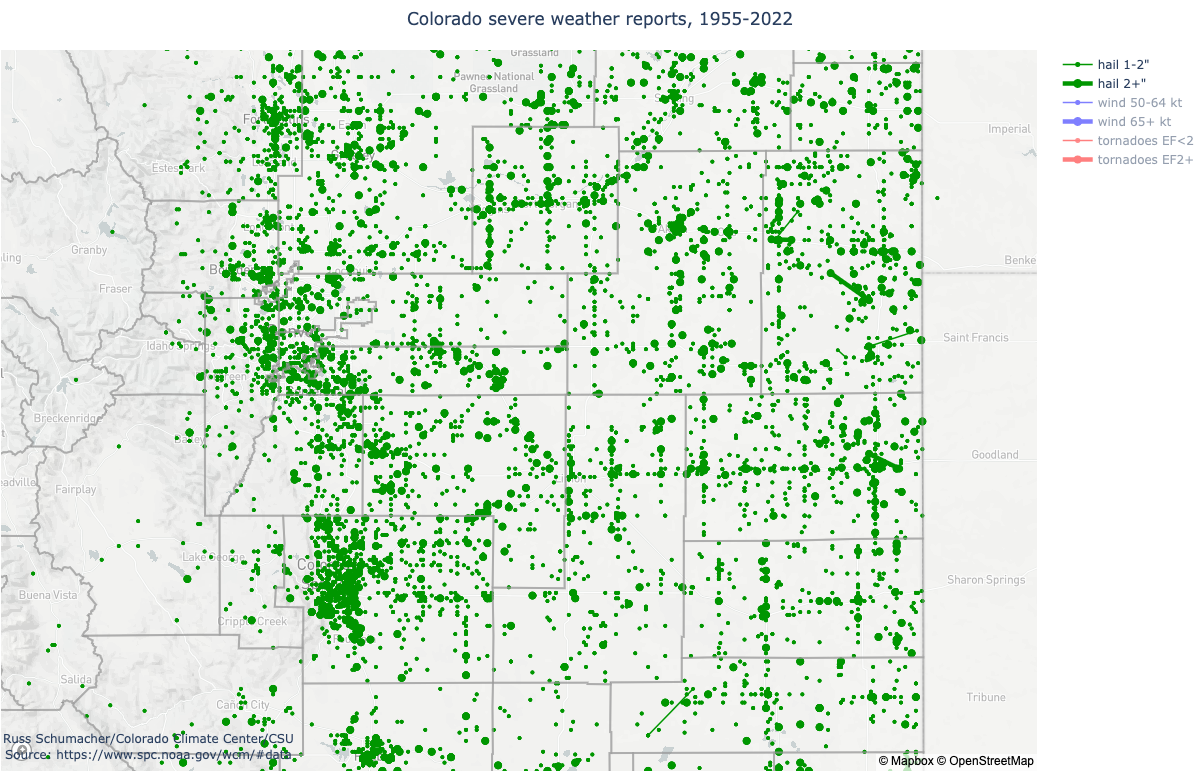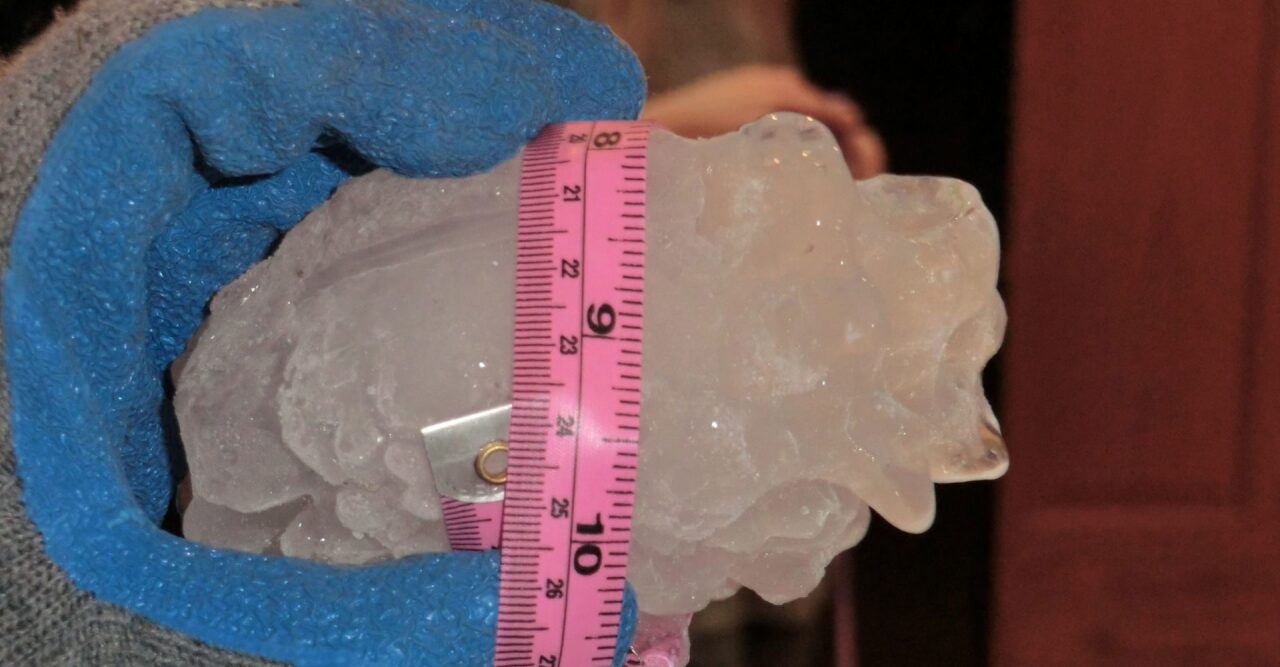Severe weather is expected in Colorado on Wednesday with a solid possibility of not only a few tornadoes, but large hail — something the state has a lengthy history with.
Colorado's hail season is typically mid-April to mid-September. The Front Range falls in the heart of "Hail Alley," which sees the highest frequency of large hail in North America, the Rocky Mountain Insurance Information Association (RMIIA) reported.
"Hail Alley" is centered around where Nebraska, Colorado and Wyoming meet, and the area sees an average of seven to nine days of hail every year, according to the National Weather Service.
The below map from the Colorado Climate Center shows hail-related severe weather reports from 1955 to 2022. Thicker points represent hail larger than 2 inches in diameter. Smaller points are hailstones that were 1-2 inches — but while tinier, they can still fall at a rate of 80 mph.

Large hail often happens within a thunderstorm where tornadoes are likely to form, according to the NOAA National Severe Storms Laboratory.
In the last decade, hail storms have caused more than $5 billion in insured damage in the state.
Carole Walker, executive director of RMIIA, said hail is the most expensive insured catastrophe in Colorado.
"People really need to think about being financially prepared for hail season," she said. "In a 45-minute hail storm, we could have billions of dollars in damage in Colorado from hail."
Two of Colorado's 10 costliest hail storms were centered in the Denver metro area, with the exception of the May 22, 2008 Windsor tornado and a storm July 29, 2009 in Pueblo, according to the RMIIA.
The May 2017 storm that ultimately would cause more than $2 billion in damages left a slew of destruction in its wake, and baseball-sized hail pounded parts of Golden and Lakewood.
Depending on the damage, and before insurance, hail-damaged cars may cost anything from a few hundred dollars to repair up to $10,000 for a car roof. If it's just fixing a few dents, that cost may dip as low as $50. Most of the time, filing a hail claim won't result in your insurance going up.
After a severe storm, an entire hail-damaged roof may cost beyond $10,000 to repair. If it's just a small section, expect to pay at least a few hundred dollars. Labor fees will be added on top of this cost. If your roof is damaged, call your insurance company and they can offer a list of trusted contractors.
Between 2018 through 2020, the number of hail-related claims across the United States increased 2% from 832,377 to 849,033, with questionable claim submissions increasing 34%, according to the RMIIA.
Texas had the most claims, with Colorado in second.
Three cities in Colorado make up the 10 cities representing 10% of the total hail loss claims between 2018 and 2020. Those local cities are Colorado Springs, Denver and Greeley.

Hail forms within storms as liquid water freezes in the cold middle and upper layers of the storm. They are kept aloft by strong updraft winds before they fall to the ground, according to the National Weather Service.
In 2019, the National Centers for Environmental Information certified the largest-ever recorded hailstone to fall in Colorado. It was found on Aug. 13, 2019 near Bethune and measured 4.83 inches in diameter and weighed 8.5 ounces. The family that found it preserved it in a freezer.
That hailstone, pictured below, is now in a freezer at the National Center for Atmospheric Research in Boulder.

Both small and large hailstorms can damage vehicles and buildings, and can even become life-threatening to people and animals. In recent years, NOAA has recorded multiple incidents of commercial airplanes being forced to land after encountering hail. In some cases, hail crushed the nose cone and damaged the cockpit windows to the point where pilots could not see.
In one case from Georgia from April 1977, a plane carrying 81 passengers crashed after hail became lodged in the engines. More than 60 people on the plane died and eight others on the ground were killed, according to NOAA.
Coloradans should expect severe thunderstorms on Wednesday into the evening, especially along and east of Interstate 25. In addition to large hail, damaging wind and isolated tornadoes are possible. Heavy rain and localized flooding, particularly along the northern I-25 corridor and burn scars, are also risks Wednesday.

Local
Tornado watch for Denver metro, northeastern plains through 9 p.m.
A Denver7 Weather Action Day is in effect for these storms. The NWS recommends having multiple ways to receive weather-related warnings.
LEARN MORE: Today's forecast | Hourly forecast | Radars | Traffic | Weather Page | 24/7 Weather Stream





